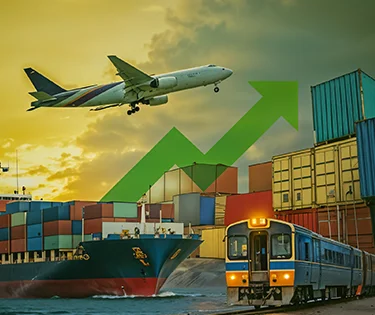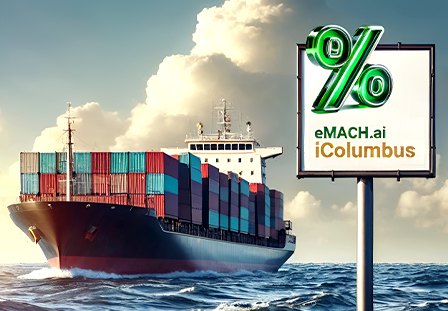- What we do
-
-
-
-
"Intellect’s continued dominance at the IBSi Sales League Table underscores its pioneering role in the fintech industry. Their commitment to innovation, exemplified by the groundbreaking eMACH.ai platform, continues to set a high benchmark in Retail Core Banking, Transaction Banking, and Lending. Intellect’s solutions are not only reshaping the present landscape but are also poised to lead the evolution of financial services globally, driving unprecedented advancements and customer-centric solutions."

Robin Amlôt
Managing Editor at IBS Intelligence
-
-
-
- Company
-
-
-
-
"Intellect’s continued dominance at the IBSi Sales League Table underscores its pioneering role in the fintech industry. Their commitment to innovation, exemplified by the groundbreaking eMACH.ai platform, continues to set a high benchmark in Retail Core Banking, Transaction Banking, and Lending. Intellect’s solutions are not only reshaping the present landscape but are also poised to lead the evolution of financial services globally, driving unprecedented advancements and customer-centric solutions."

Robin Amlôt
Managing Editor at IBS Intelligence
-
-
-
- Knowledge
-
- Our Events
- Contact Us
Africa Roundtable Event
Learn More News FlashiGTB Pulse Newsletter May 2025
Learn More News FlashHighlights of iGTB at EBAday 2025
Learn More News FlashEnhancing Corporate Payment Efficiency with SWIFT GPI Tracker powered by eMACH.ai
Learn More News FlashEmpower Digital Payments: KPI-Driven Payments with Self-Service Intelligence
Read More News FlashUnlocking Africa’s Trade Finance Potential: Driving Growth Through Digital Innovation
Read More


eMACH.ai Supply Chain Finance – The Past, Present and the Promising Future ?

Supply Chain Finance – The Past, Present and the Promising Future ?
Anand Pande, Global Product Chair, eMACH.ai SCF and Founder GPP, runs through the history of supply chain finance and looks at where it’s headed in the near future.
In a recent article by The Economist, I was cited as describing supply chain finance as “a land of unrealised promise”. The piece focused mainly on post-shipment financing programs offered directly by banks or indirectly through technology companies – with a revenue pool of USD 2.8 billion dollars attributed to this kind of buyer centric or reverse factoring supply chain financing programs.
In my opinion, banks and especially the freshly minted fintechs in the lending space should also be looking at pre-production financing flows on the supplier side, along with inventory financing flows on the demand or sales side. Combined, these would swell supply chain finance revenues pools in excess of USD 300 billion dollars (according to estimates from the Growth Paradigm Partnership). This may also be the reason that supply chain finance revenues for banks have underperformed at just 10% to 25% of their total trade revenues, despite 80-90% of global trade flows being dominated by open account supply chains.
Banks were bolder in the early 90s when it came to addressing financing gaps through pre- production supplier financing. Funding was offered based on irrevocable purchase orders, transmitted either through ERP integrations or H2H connectivity between big global corporations in the retail industry, especially in clothing and the accessories sector. The technology switch that saw purchase orders transmitted from global corporations to the multiple country locations of global banks in the emerging growth markets of Asia, Eastern Europe and South America was a win-win – securing much-needed SME financing and the acquisition of new SME clients for banks, while simultaneously bringing sustainability and stability to supply chains.
Fast-forwarding past the global financial crisis to the present, most of the supply chain finance programs supported by technology are focused on providing relatively safe post-shipment financing backed by buyer-accepted invoices. The supporting technology typically consists of either a proprietary bank platform or a multi-funding bank-agnostic platform provided by one of the various technology companies that seem to be being founded on an almost daily basis. Both these bank and non-bank platforms, however, address only a small portion of the market, while scalability remains an ongoing challenge due to on-boarding, KYC, legal, accounting and multiple jurisdiction documentation challenges.
Emerging technologies such as artificial intelligence, natural-language processing, and robotic process automation will undoubtedly play a definitive role in bringing about efficiencies in the SCF space. However, to achieve commercial success and revenue growth, banks must also look at replacing their conventional risk assessment and compliance models (focused on balance sheet and P&L statements) with more dynamic models that utilise both quantitative and qualitative tools.
The quantitative tools will be powered by high-end analytics, which look at matching accounts payable and receivable data from the large buyer or seller’s ERP with the invoices raised, as well as the actual payments received in the supplier’s bank account. A sophisticated web-scraping tool, backed by machine-learning algorithms, will then carry out the next level of analysis to identify suppliers with strong performance track records.
The qualitative tools will further enhance the risk assessment process by gathering and analysing data from various social media sources, as well as multiple government, company affairs and credit bureau databases, including information on taxes, litigations, tax payments, salary payments and employee CPF contributions.
The qualitative tools will further enhance the risk assessment process by gathering and analysing data from various social media sources, as well as multiple government, company affairs and credit bureau databases, including information on taxes, litigations, tax payments, salary payments and employee CPF contributions.
Blockchain solutions, meanwhile, promise to bring further efficiency to the supply chain finance process. But to progress, these will need to move from disparate standards towards either interoperability or a uniform standard. Clarification from governments as to the legal enforceability and validity of smart contracts is another pre-requisite for building critical mass – and one which needs to be resolved on an urgent basis.
Of course, the technology available today is already enabling banks to make big strides with their offerings – and SCF is showing signs of clear profit potential. One of our client banks with 5000 plus branch network in just a few weeks in following the implementation of a new straight through processing product and is already achieving tens of millions of dollars of disbursements. More banks – and more profit – will surely follow.
Anand Pande is Global Product Chair, eMACH.ai SCF, at iGTB and Founder of the GPP




























